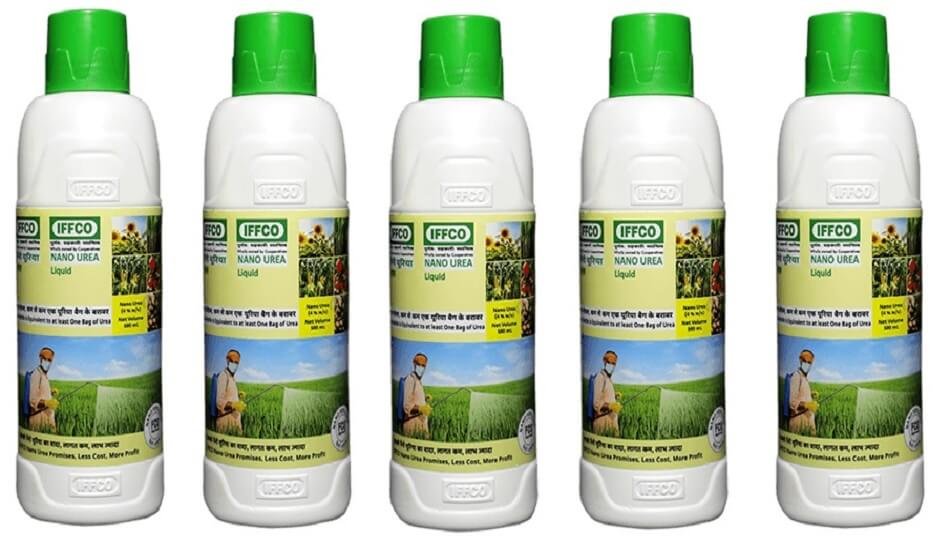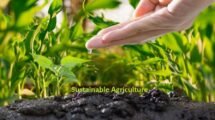Scientists question ‘Nano Urea’ technology’s effectiveness on crop benefits.
The Indian Farmers Fertiliser Cooperative Limited (IFFCO) has patented and sold a fertiliser called ‘Nano Urea.’ The government has approved it for commercial use because it has the potential to cut the import bill by a large amount, but several experts have questioned the science behind its effectiveness.
When he opened a Nano Urea production plant in Kalol, Gujarat, on May 28, Prime Minister Narendra Modi said, ‘A small bottle (500 ml) of Nano Urea is the same as one 50 kg bag of granular urea that farmers use now.’
Nitrogen is an important part of plant growth, and IFFCO’s Nano Urea has it in the form of granules that are 100,000 times smaller than a sheet of paper. Materials act differently at this ‘nano’ scale, which is about a billionth of a meter than they do in the visible world.
Also Read | Private sector unwilling to “use nano urea” technology, will wait & see for assured sales.
Ramesh Raliya, who is 34 years old and is credited with creating Nano Urea and works as a consultant for IFFCO, told The Hindu that his process uses ‘organic polymers’ to keep the ‘nano’ particles of nitrogen stable and in a form that can be sprayed on plants.
Ramesh Raliya, who invented it, says that farmers are benefiting from it, and in the end, they are the best judges.
Chemically, packaged urea is 46% nitrogen, which means that a 45 kg sack has about 20 kg of nitrogen. Nano Urea sold in 500 ml bottles, on the other hand, has only 4% nitrogen (or around 20 gm). Scientists don’t understand how this can make up for the kilogrammes of nitrogen that are usually needed.
Plants need nitrogen to make protein, and almost all of it comes from soil bacteria that live in the roots of plants and can turn nitrogen from the air or from chemicals like urea into a form that plants can use.
A plant needs 25 kg of nitrogen to make one tonne of wheat grain. It’s 20 kg of nitrogen for rice and 30 kg of nitrogen for maize. Not all of the urea that is put on the soil or, in the case of Nano Urea, sprayed on the leaves can be used by the plant. If 60% of the available nitrogen was used, 496 kg of wheat grain would be produced. N.K.
Tomar, a retired professor of soil science at Chaudhary Charan Singh Haryana Agriculture University in Hissar, Haryana, said that even if the plant uses all of the 20 gm of Nano Urea that is actually available, it will only produce 368 gm of grain.
‘Therefore, all attempts are useless and just waste money. In a letter to the NITI Aayog and the National Academy of Agricultural Sciences, he says, IFFCO’s claim is not true, and if it’s true, it will be terrible for farmers.’ Dr. Tomar said to The Hindu that they hadn’t answered his letter yet.
I.P. Abrol, who used to work for the Indian Council of Agricultural Research and is now retired, agrees with him (ICAR). ‘Urea mixes well with water and is already at the lowest concentration when it is absorbed. I don’t understand how the fact that nanoparticles are even smaller makes nitrogen uptake work better. Since the 1960s, people have known that spraying on the leaves (foliar spraying) helps plants take in more fertiliser. ‘Well, what’s new?’ Dr. Abrol asked.
Dr. Raliya said that the nano particle form of Nano Urea, when put on the leaves, stimulates enzymes like nitrase and nitrite reductase, which help plants metabolise nitrogen, unlike the coarse particles that farmers usually throw on the soil when sowing.
Different parts of the plant have different amounts of nitrogen, and because nanoparticles are so small and numerous, they have a lot more surface area compared to their volume than the millimeter-sized grains of urea that plants are exposed to. This means that nanoparticles are nearly 10,000 times more nitrogenous than millimeter-sized grains of urea.
‘The interaction and metabolism are much better, so the response is better (in terms of yield). Take the smartphone. Because we use nanomaterials like carbon, titanium dioxide, and graphene, smaller batteries and processors can give off the same amount of power as bigger batteries used to. The nanoparticles in Nano Urea release more nitrogen because of the quantum effects of nanoparticles and their larger surface area,’ Dr. Raliya said.
There are still some things about how plants react to nanoparticles that aren’t clear and need more research. ‘I’ve done a lot of research on this, but I still have a lot of questions. But we have results from tests, which is why the government gave the product the green light. It helps the farmers, and in the end, they are the best people to ask,’ he said.
An agronomist from the Ministry of Agriculture who didn’t want to be named said that the increase in yields seen in plants that were given Nano Urea was due to the fact that nitrogen in the soil and fertiliser was enough in the first year, so there was no need for Nano Urea to add nitrogen. ‘Let’s say you have money in your pocket and take a little out every year. ‘You’ll run out at some point,’ he said.
Dr. Raliya questioned this claim. He said that as part of his research that led to the creation of Nano Urea, he had checked to see if Nano Urea was causing nitrogen in the soil to run out and found that it wasn’t. ‘Most plants have very little nitrogen, between 1% and 1.5%. We saw that neither the leaf nor the soil had less nitrogen,’ he said.
As part of his research, he tested to see if spraying Nano Urea and using organic farming methods could replace packaged urea. ‘We saw that there was no yield loss. But you can’t get farmers to stop using packaged urea overnight because they are used to it. Over time, as farmers see results, they will use less packaged urea, said Dr. Raliya, who is from a farming family and got his PhD at the ICAR-Central Arid Zone Research Institute in Jodhpur.
Also Read | India’s first nano urea plant in Bangalore with an investment of ₹350 cr – IFFCO.
Trilochan Mohapatra, who was the Director General of ICAR when the product was approved and told The Hindu that the jury was still out on how Nano Urea worked, but it was clear that a lot of the urea used on fields now was wasted. ‘Today, 70% of the urea that is used is wasted. How much of that last 30% actually gets to the plant depends on many things, like how you spray and how good the soil is. Dr. Mohapatra said, It’s possible that the nanoparticles are making things work better, but we need proof.’


















Add Comment